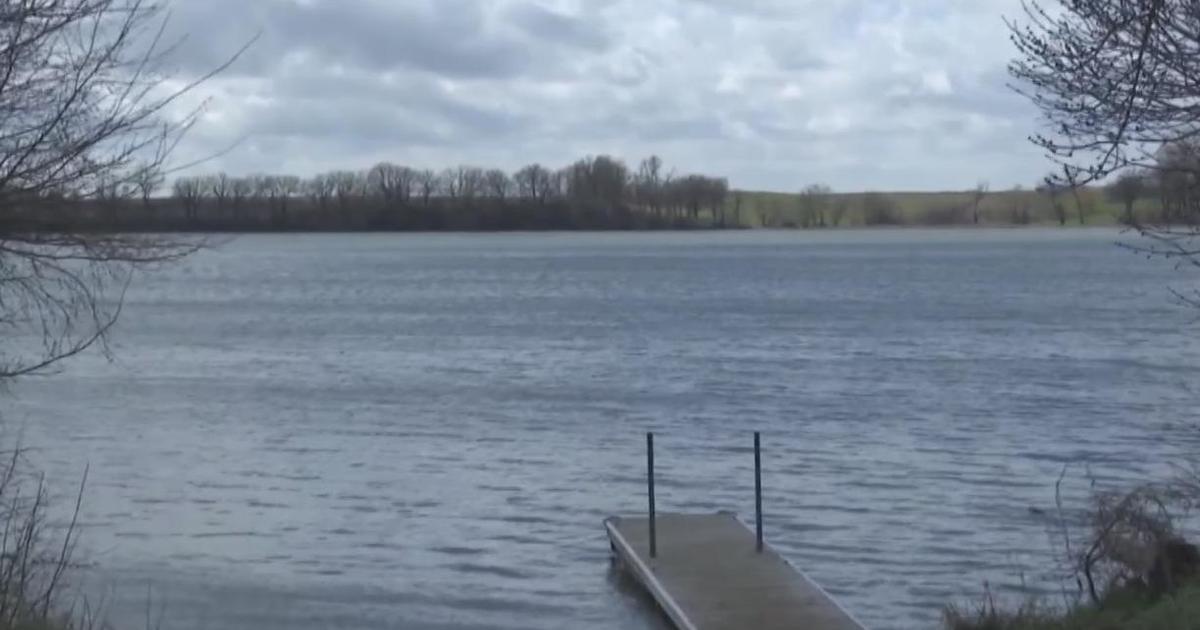Great Lakes Aquatic Invaders Star In Minn. Exhibit
DULUTH, Minn. (AP) -- The story of the Great Lakes might be better if it didn't include a chapter on invasive species -- critters such as sea lampreys, quagga mussels and gobies that are creating economic and ecological harm across the region.
But that unseemly chapter is still one that needs telling, and the Great Lakes Aquarium on Duluth's harbor front is diving in.
The new "Aquatic Invaders" exhibit opens June 30 at the aquarium, where officials hope the educational mission that's become synonymous with lake trout, river otters and sturgeon can transfer to invasive species.
Work on the exhibit started Monday as the aquarium readies tanks and space for live round gobies, sea lampreys and goldfish to go along with dead and replica zebra mussels.
Goldfish? Yes, even harmless-looking goldfish, when released into ponds or lakes by well-intentioned kids or adults, can develop into sustaining populations that overwhelm native fish.
Aquarium staff is working to make the exhibit both entertaining and educational. But there will be no Sea World-esque shows using jumping carp instead of dolphins or killer whales. The same goes for Eurasian water milfoil, with regulators trying to keep anything not already in Lake Superior far away from the lake.
"We asked about Asian carp. They're the hot invasive species right now getting all the attention. But the Fish and Wildlife Service understandably said `no way,' " said Jay Walker, operations manager for the aquarium
The aquarium would have added live zebra mussels, which already infest the harbor, but the creatures probably would have reproduced and fouled the miles of pipe that keeps water circulating through the 62,000-square-foot facility. So the mussels, like the Asian carp and milfoil, will be fake -- or at least long past dead.
"This exhibit is going to be all about trying to prevent the spread of aquatic invasive species, so we really don't want to be the epicenter of some escape that causes a new introduction," said Sarah Erickson, the aquarium's education director.
Goby will be a focus species, Erickson noted, because the European invader has spread across the Great Lakes, where they reproduce rapidly (more than once each year) and push out native species such as sculpin. Gobies also eat the eggs of native species such as smallmouth bass, and they muddy up the water as they scrounge along the bottom.
"When we have our fishing programs here, mostly what the kids catch are gobies," Erickson said. "They've really taken over in parts" of the harbor.
The 300-square-foot exhibit was funded through the Environmental Protection Agency, with a $134,000 grant from the Great Lakes Restoration Initiative, Congress' effort to begin restoring the Great Lakes toward environmental health.
The exhibit will try to explain the economic, ecological and recreational impacts from aquatic invasive species, along with the pathways and means by which the creatures got here -- from bait buckets to ships' ballast water. The invaders' ecological impacts will be a key part of the exhibit, as well as education about why prevention and detection is still important.
The display will tell visitors clear steps they can take to help slow the spread of invasives.
"We are always walking the line between attraction and education. . But we want people to come away with something from their visit," Erickson said. "The take-away message here is that these species impact everyone, whether you are a boater or fisherman or just like to look at the lake."
The exhibit will include a mock dock infested with fabricated zebra mussels; an animated story board illustrating the harmful effects of introducing unwanted pets into area waters; a video featuring ways local scientists, community members, pet stores and the shipping industry are working to stop of the spread of invasive species; an interactive display on how anglers, boaters and others can help keep invasive species at bay and a display illustrating how climate change is beneficial to invasive species and harmful for native species.
The aquarium, which opened in July 2000, is on pace to reach near-record attendance this year, said Jack LaVoy, executive director. If trends hold, the facility will see some 140,000 guests in 2011, the most since 2002 and up from last year's 128,000 visitors. May's cool temperatures and most rainy days help indoor attractions like the aquarium.
The aquarium is producing about 85 percent of its budget from ticket sales, special programs, parking and other internal sources, LaVoy said, with about 15 percent coming from a share of the city's so-called tourism tax that helps fund several attractions in town.
The aquarium is open from 10 a.m. to 6 p.m. every day.
(© Copyright 2011 The Associated Press. All Rights Reserved. This material may not be published, broadcast, rewritten or redistributed.)



